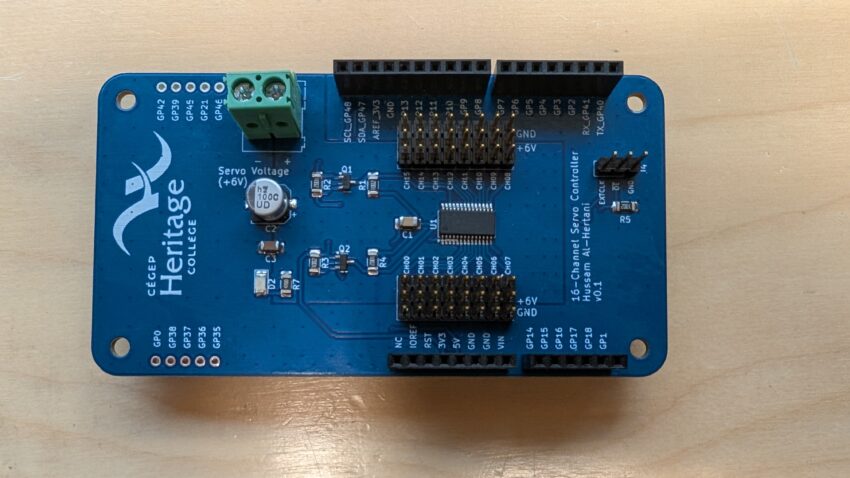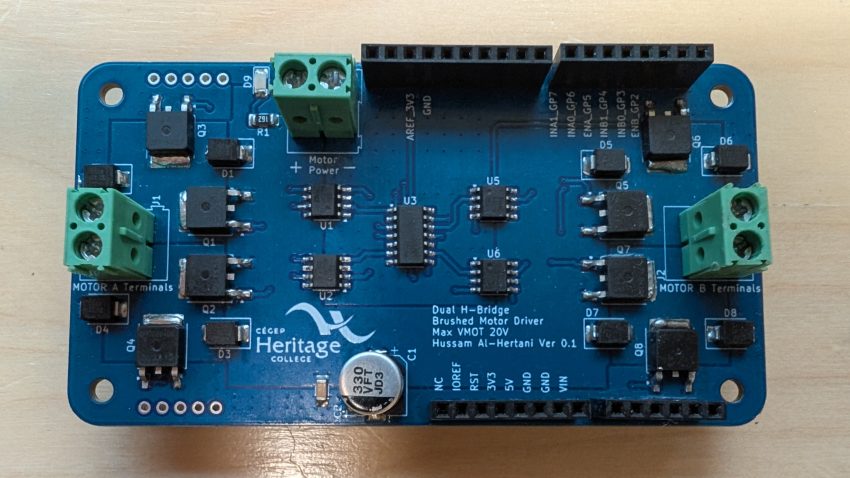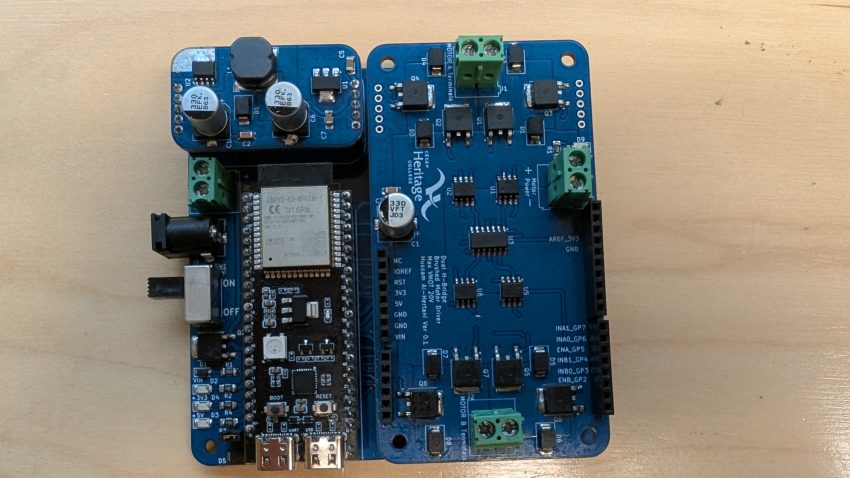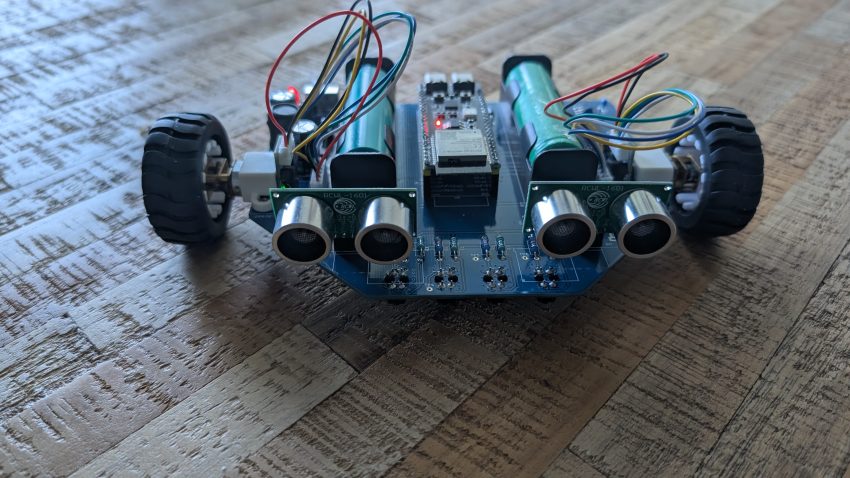The 16-channel servo motor controller is yet another IOTIS daughterboard reference design. It is based around the PCA9685 Pulse Width Modulation (PWM) controller integrated circuit (I.C.). The PCA9685 has 12-bit resolution. It can control up to 16 LEDs. Thanks to its ability to output a variable frequency ranging from 1526Hz to 24Hz, it can also…
Project
IOTIS Daughterboard: Dual H-Bridge Motor Controller for Brushed DC Motors
The objective of the IOTIS ecosystem is to provide a standardized platform for students to develop their capstone projects. The baseboard and the powerboard are typically made available to all students. The students would then have to build their own daughterboard, which is application-specific to their particular capstone project and its requirements. The layout of…
The IoT Innovation Station
The EET Faculty at our college decided to develop a standardized printed circuit board (PCB) platform that students can utilize in their capstone projects. It’s called the IoT Innovation Station (IOTIS), and is sometimes referred to as the ‘IoT stack’. In addition to serving as a standardized platform for the program’s capstone project, students get…
MicroPython Library for the PCA9685
The PCA9685 chip is a 16 channel PWM controller with 12-bits of resolution. It can control via PWM up to 16 LEDs. Thanks to the fact that it can output a variable frequency from 1526Hz down to 24Hz, it can also be used to control up to 16 servos. Servos usually expect a 50Hz signal…
UDPNode: A C++ class for UDP Communication
A couple of months ago, I decided to pursue few IOT project ideas that could benefit from basic UDP (User Datagram Protocol) communication. The MQTT and CoAP protocols are definitely more robust and secure. But there are some situations where the basic UDP protocol is sufficient. The POSIX C socket API built into Linux is…
Introducing PCBBot!
The PCBBot leverages the PCB itself as the robot chassis. This reduces cost significantly. It also means that the two motors and the caster wheel would have to be mounted on the PCB itself, in addition to the batteries and all the other components.



